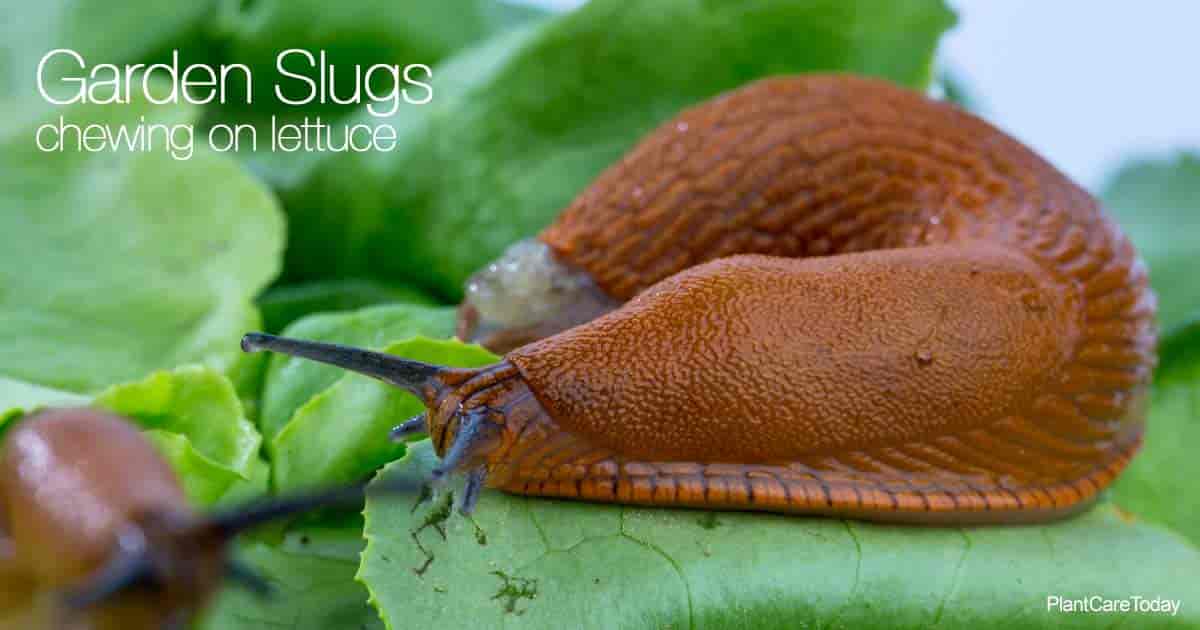Garden Slugs, are one of those difficult pests in the garden. They attack:
- Cabbage
- Carrots
- Turnip
- Lettuce
- Tomatoes
- Strawberries
- … and many other vegetables and flowers.

Garden cleanliness and chemicals will help control them.
These snail-like creatures, minus shells, leave a damp film of mucus wherever they travel.
This film and the ragged holes in plants are tell-tale evidence of their presence. They can often be found traveling across walks soon after a rain.
Slugs prefer damp places.
They hide under old boards, moldy leaves, and stones.
One way to get rid of them is to clean out these havens. Another favorite haunt is under the decorative bricks often used to edge flower beds.
The other way is to go after them with various chemicals. Metaldehyde is the one most often used.
It is the basic ingredient of a number of slug and snail baits and dust on the market.
Diatomaceous Earth food grade is another excellent natural way to control slugs.
All are effective if used as directed. They are poison and should be kept from children and pets.
More on –> How to Kill Slugs
Making Your Own Homemade Slug Bait
You can make your own slug bait by combining ¼ ounce of 98% percent metaldehyde powder with 14 to 16 ounces of wheat bran and adding enough water to make a mash of fine particles without lumps.
Make up the mash several hours before applying, so the bran will absorb the poison.
Put it in little heaps the size of a half-dollar under a board, or hide it under dense vegetation so it is out of the reach of pets or birds.
When baiting an everbearing strawberry bed, use metaldehyde early in the season before plants become large.
Take care not to get any on plant parts or fruits that are to be eaten. You may need to bury the poison between rows to put it out of contact with plants.
Rebait again after the first berry crop matures, for this is when slugs are most prevalent.
Yellowish translucent eggs are often uncovered when you turn the earth in the fall.
Collect and discard any you see, for they will develop into slugs.
These creatures come in different kinds and sizes. The spotted garden slug, a familiar kind, is yellow-gray or brown, and grows up to six or more inches long, developing black spots when he is mature.
There is a gray garden slug of smaller size; it leaves a milky slime.
The young of both varieties are dark brown or gray.
Although slugs are slow movers, they are known to travel several hundred feet searching for a damp, dark hiding place.
So bait more than one part of your yard.
